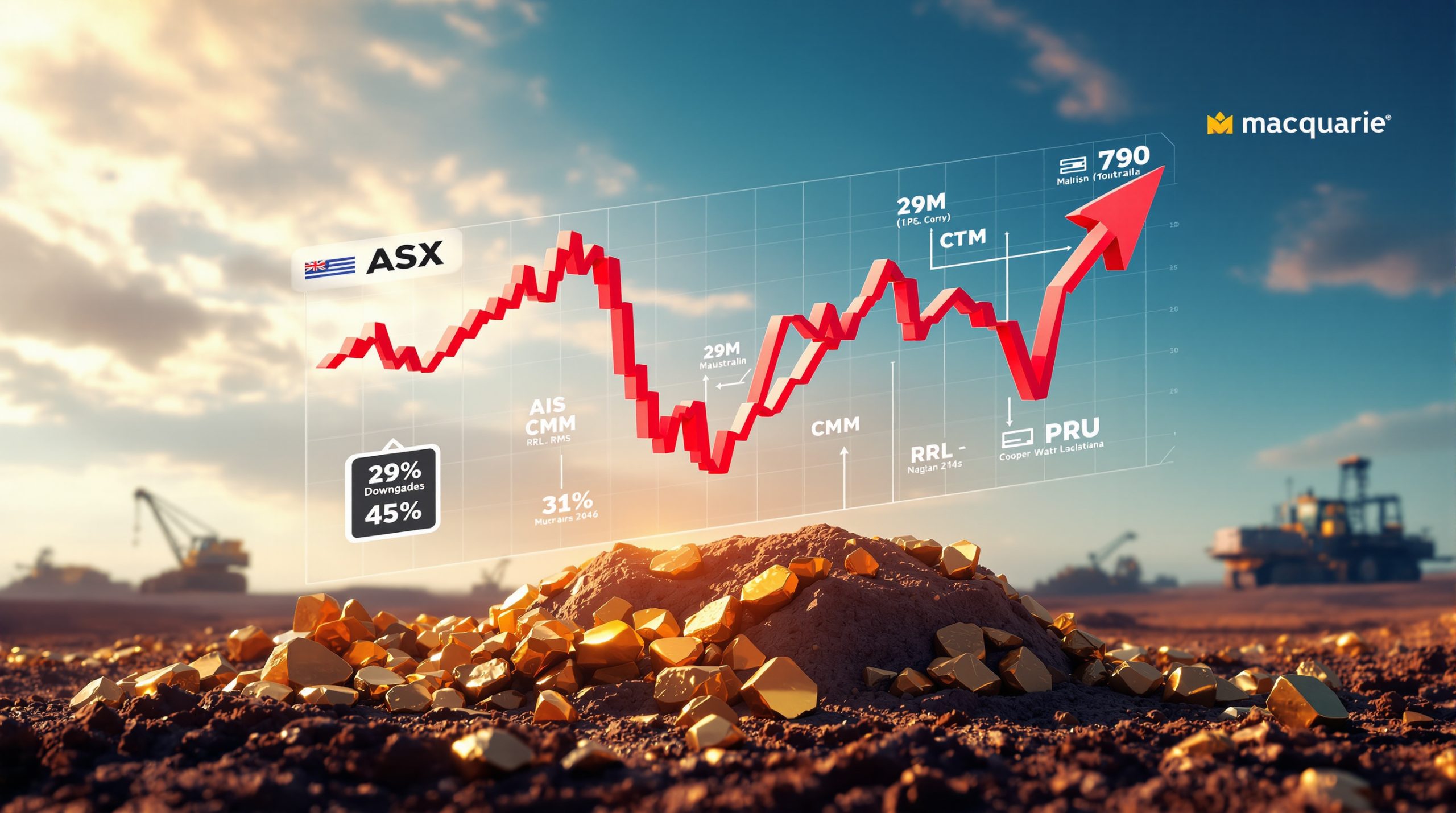How Does the Middle East Conflict Impact Oil Prices?
The Strategic Importance of Middle Eastern Oil
The Middle East sits at the crossroads of global energy security, controlling approximately one-third of the world's oil production and possessing nearly half of known global reserves. This concentration of resources in a politically volatile region creates persistent market anxiety whenever tensions escalate.
The Strait of Hormuz Vulnerability
The Strait of Hormuz represents perhaps the most vulnerable chokepoint in the global energy supply chain. Approximately 25% of the world's oil flows through this narrow waterway between Iran and Oman—a passage that at its narrowest point spans just 21 miles.
"If Iran shuts down the Strait of Hormuz, we could see oil prices skyrocket to many hundreds of dollars a barrel," warns energy analyst Andrew Slay. "This would trigger a potential hyperinflation event and possibly a worldwide depression."
Military analysts consider the strait particularly vulnerable to disruption through naval mines, anti-ship missiles, or small boat swarm tactics. The U.S. Fifth Fleet maintains a continuous presence in the region precisely because of this strategic importance.
A complete blockage would require rerouting oil shipments around the Arabian Peninsula, adding significant time and cost to transportation while removing approximately 21 million barrels per day from immediate global supply.
Regional Production Significance
Beyond transportation chokepoints, the production capacity of Middle Eastern countries themselves represents a critical factor in global energy markets:
- Saudi Arabia: The world's swing producer can ramp production up or down by several million barrels daily, providing crucial market stabilization
- Iraq: Despite decades of conflict, still produces over 4 million barrels daily
- Iran: Possesses the world's fourth-largest oil reserves despite operating under various international sanctions
- UAE: Has invested heavily in production capacity expansion, becoming an increasingly important global supplier
When conflicts threaten any of these producers, markets immediately price in potential supply disruptions. During the September 2019 drone attacks on Saudi Aramco facilities, oil prices surged 18% overnight despite no long-term production impacts—demonstrating how perception alone drives volatility.
How Geopolitical Tensions Translate to Price Volatility
Oil markets respond to Middle Eastern developments with remarkable speed. "Markets react within hours of significant escalations," notes Slay. "Algorithmic trading can amplify these moves within minutes of breaking news."
This sensitivity stems from oil's inelastic demand curve—consumers cannot quickly reduce consumption when prices rise, creating sharp price spikes during supply uncertainty.
Historical Price Responses to Regional Conflicts
Previous Middle Eastern conflicts demonstrate clear patterns of oil price volatility:
- 1973 Oil Crisis: The OPEC embargo following the Yom Kippur War drove prices from $3 to $12 per barrel—a 300% increase that triggered global stagflation
- 1979 Iranian Revolution: Oil prices doubled from $15.85 to $39.50 between 1978-1981 as Iranian production collapsed
- 1990 Gulf War: Iraq's invasion of Kuwait caused prices to spike 112% in just two months, from $17 to $36 per barrel
- 2019 Saudi Aramco attacks: The temporary loss of 5.7 million barrels per day (about 5% of global supply) caused prices to jump 18% in a single day
These historical examples show that price responses often far exceed actual supply disruptions due to fear-driven buying and speculative trading. The OPEC oil production impact can be particularly significant during times of heightened tensions.
Risk Premium Mechanics
During heightened tensions, traders add a "geopolitical risk premium" to oil prices—typically ranging from $5-15 per barrel depending on the severity of the situation. This premium reflects the market's assessment of potential supply disruptions rather than actual changes in supply-demand fundamentals.
The premium calculation involves complex risk modeling that considers:
- Disruption probability: Analysts assign percentage chances to various conflict scenarios
- Volume at risk: How many barrels could potentially be removed from global supply
- Duration estimates: How long supply disruptions might persist
- Strategic reserve offset: Ability of consumer nations to release emergency stockpiles
High-frequency trading algorithms monitor news feeds and social media for keywords related to Middle Eastern conflicts, executing trades within milliseconds of breaking developments. This algorithmic response often amplifies initial price movements.
The Ripple Effect Through Global Economies
Oil price spikes triggered by Middle Eastern tensions create cascading effects throughout the global economy, often with disproportionate impacts on developing nations.
Transportation Cost Escalation
The transportation sector bears the initial brunt of oil price increases. According to World Bank data, each $10 per barrel increase in oil prices raises global transportation costs by approximately 1.5%. This increase affects:
- Shipping rates: Container shipping costs rise almost immediately
- Airline profitability: Aviation fuel represents 20-30% of operating costs
- Trucking expenses: Ground transportation costs climb, affecting retail prices
- Consumer behavior: Travel patterns shift as fuel costs rise
These transportation impacts create second-order effects as businesses pass increased costs to consumers, contributing to broader US inflation and tariffs concerns.
Agricultural Impact
Modern agriculture depends heavily on petroleum products throughout the production cycle:
- Machinery operation: Tractors, harvesters, and irrigation pumps require diesel fuel
- Fertilizer production: Natural gas (often price-linked to oil) is a key component in fertilizer manufacturing
- Product transportation: Moving agricultural products from farm to market becomes more expensive
A significant oil price increase due to Middle Eastern conflicts can raise food production costs by 15-30%, depending on farming methods and distance to markets. These increases disproportionately affect food-insecure regions with limited ability to absorb higher costs.
Manufacturing Consequences
Manufacturing sectors face dual challenges when Middle Eastern tensions drive oil prices higher:
- Direct energy costs: Many industrial processes require substantial energy inputs
- Raw material expenses: Petroleum-derived products like plastics and chemicals become more expensive
- Reduced consumer spending: Higher fuel costs leave consumers with less discretionary income
- Supply chain disruptions: Transportation delays and cost increases complicate production schedules
Manufacturers typically face a difficult choice between absorbing higher costs (reducing profitability) or passing them to consumers (potentially reducing sales volume).
Is This Different From Previous Middle East Conflicts?
Today's energy landscape differs significantly from previous decades, creating new dynamics in how Middle Eastern conflicts impact global markets.
New Global Energy Landscape
Several factors have altered the traditional relationship between Middle Eastern tensions and global energy markets:
- U.S. shale revolution: American production has surged from 5 million barrels per day in 2008 to over 13 million today, reducing dependence on Middle Eastern imports
- Growing renewable capacity: Solar and wind provide increasing electricity generation, reducing oil demand in power sectors
- Strategic petroleum reserves: Major economies collectively hold approximately 1.5 billion barrels (equivalent to 3-4 months of Middle Eastern exports)
- Demand flexibility: Remote work options and electric vehicles provide some consumption elasticity not present in previous decades
These factors don't eliminate price volatility during conflicts but may limit extreme scenarios compared to historical crises. Additionally, Saudi Arabia exploration efforts continue to shape the global energy landscape.
Interconnected Financial Markets
Today's oil markets react more quickly to geopolitical developments than in previous decades. Information spreads instantaneously, and algorithmic trading can amplify price movements within minutes of breaking news from conflict zones.
Financial products like futures, options, and exchange-traded funds allow investors to take positions on oil prices without actually handling physical oil. This financialization creates potential for greater volatility as speculative capital moves in and out of energy markets based on geopolitical developments.
The 2023 Israel-Hamas conflict demonstrated this dynamic—Brent crude rose 8% in 48 hours despite no actual supply disruption, purely on fears of potential regional escalation, according to Oxford Economics' analysis.
How Do Oil Price Fluctuations Affect Precious Metals?
The Gold-Oil Relationship During Conflicts
Gold and oil often move in tandem during Middle Eastern conflicts, though for different underlying reasons. While oil prices rise due to supply concerns, gold typically rallies as a safe-haven asset and inflation hedge.
Inflation Hedge Dynamics
When Middle Eastern tensions drive oil prices higher, investors often turn to gold as protection against the resulting inflation. Historical data from the World Gold Council shows that for every 10% increase in oil prices during conflict periods, gold typically rises 2-5% as investors seek safe-haven assets.
This relationship stems from oil's position as an input cost for nearly all economic activity. Higher oil prices eventually translate into broader inflation, eroding the purchasing power of traditional currencies. Gold, with its limited supply and universal recognition, becomes an attractive alternative, often reaching record highs during these periods.
"The forces of money printing to fund military operations, combined with the fear trade during geopolitical uncertainty, create powerful upward pressure on gold prices," explains Slay. This dynamic played out clearly during the 2022 Russia-Ukraine conflict, when gold rose 12% in the first quarter as oil prices surged.
Currency Devaluation Concerns
Oil price spikes often lead to concerns about currency devaluation, particularly for oil-importing nations with trade deficits. Countries heavily dependent on oil imports face deteriorating trade balances, currency depreciation, and potential inflation—all factors that strengthen gold's appeal as an alternative store of value.
The relationship intensifies for countries facing sanctions or international isolation during conflicts. Iran, Russia, and Venezuela have all increased their gold reserves substantially during periods of geopolitical tension, attempting to reduce dependence on dollar-denominated transactions.
For individual investors, gold provides a hedge against both inflation and currency risks during oil-driven crises. Physical gold, in particular, offers protection against systemic financial risks that might accompany severe energy disruptions.
Central Bank Responses
When oil-driven inflation threatens economic stability, central banks face difficult policy choices:
- Raise interest rates to combat inflation (potentially slowing economic growth)
- Maintain accommodative policy to support growth (potentially allowing inflation to accelerate)
- Implement targeted measures to address energy-specific inflation
These policy responses significantly impact gold prices. Historically, when central banks prioritize growth over inflation fighting during oil shocks, gold performs particularly well. Conversely, aggressive rate hikes to combat energy inflation create headwinds for precious metals.
The 2022-2023 period demonstrated this relationship, as central banks initially hesitated to raise rates despite energy-driven inflation, allowing gold to strengthen substantially before more aggressive tightening began.
Silver's Dual Nature During Oil Crises
Silver occupies a unique position during Middle Eastern conflicts due to its dual role as both a precious metal and an industrial commodity.
Industrial Demand Pressures
Silver faces competing forces during oil price spikes:
- Negative pressure: Higher energy costs slow industrial activity, reducing silver demand in manufacturing, electronics, and consumer goods
- Positive pressure: Investment demand seeking inflation protection increases
- Military applications: Conflict-related demand for electronics, communications equipment, and weapons systems that incorporate silver components
This complexity makes silver price movements during oil crises more difficult to predict than gold. Silver typically exhibits greater price volatility than gold during Middle Eastern conflicts, with price movements often 1.5-2 times more pronounced due to these competing factors and silver's smaller market size.
During the 2022 Russia-Ukraine conflict, for example, silver initially declined as industrial concerns dominated, then rallied strongly as monetary and safe-haven factors took precedence—demonstrating this dual nature. The silver market dynamics can be particularly complex during geopolitical crises.
Price Volatility Comparison
Several factors contribute to silver's higher volatility during oil-driven crises:
- Smaller market size: The silver market (approximately $25 billion annual production value) is tiny compared to gold ($200+ billion), allowing smaller capital flows to create larger percentage moves
- Industrial correlation: Silver's industrial demand (roughly 50% of consumption) creates economic sensitivity gold doesn't share
- Investor psychology: Silver attracts both safe-haven investment and industrial speculation, amplifying moves in both directions
- Retail participation: Silver's lower price point attracts more retail investors, who may react more emotionally to geopolitical events
This volatility creates both risk and opportunity. During the 1990 Gulf War, silver prices fluctuated by over 30% in a matter of weeks—nearly twice gold's movement during the same period.
Military Consumption of Precious Metals
An often-overlooked factor during Middle Eastern conflicts is the direct consumption of precious metals in military applications. This consumption creates additional demand precisely when geopolitical factors are already supportive of higher prices.
Silver in Defense Applications
Modern military equipment incorporates significant amounts of silver:
- Missile systems: According to Slay, "Each Tomahawk missile contains approximately 500 ounces of silver in various electronic components"
- Communications equipment: Military-grade communications systems use silver in circuit boards and connection points due to its superior conductivity
- Satellite technology: Space-based reconnaissance and communication systems incorporate silver in solar panels and electronic components
- Medical supplies: Silver's antimicrobial properties make it valuable in field medical equipment
While precise figures remain classified, defense industry analysts estimate that military applications account for 5-10% of industrial silver demand during active conflicts. This percentage can increase substantially during major military operations.
Cumulative Impact Assessment
While individual military applications may seem minor compared to global silver production (approximately 820 million ounces annually according to USGS data), the cumulative effect of prolonged conflicts can create meaningful demand pressure.
The launch of 100 Tomahawk missiles, for example, would consume approximately 50,000 ounces of silver—a small fraction of global production, but significant when combined with other military applications and occurring simultaneously with investment demand increases.
This military demand factor remains poorly understood by many investors, creating potential opportunities for those who recognize its impact during escalating conflicts.
The Broader Economic Context of Middle East Tensions
War Economy Dynamics
Conflicts in the Middle East generate economic ripple effects far beyond immediate oil price impacts. Understanding these broader economic dynamics provides essential context for investment decisions during periods of regional tension.
Government Spending Patterns
Middle Eastern conflicts often trigger increased government spending across multiple fronts:
- Direct military expenditures: The U.S. defense budget increased by approximately $100 billion in 2024 due to Middle East tensions, according to Congressional Budget Office analysis
- Foreign aid and support: Financial assistance to regional allies often increases substantially during conflicts
- Domestic security measures: Counter-terrorism and infrastructure protection budgets expand
- Energy security investments: Strategic petroleum reserve expansions and alternative energy development accelerate
This spending surge creates short-term economic stimulus but often leads to longer-term fiscal challenges. The U.S. national debt increased by $2.2 trillion between 2023-2025, partially driven by Middle East-related expenditures.
"Conflicts accelerate currency debasement as central banks print to fund war, fueling inflation," Slay observes. This process creates a feedback loop where military spending to secure oil supplies contributes to the very inflation problem that higher oil prices initiated.
Monetary Policy Implications
The combination of higher oil prices and increased government spending creates challenging conditions for central banks:
- Inflationary pressure: IMF research indicates that a 10% increase in oil prices can raise inflation by 0.4-1.0%, depending on a country's energy intensity
- Growth concerns: Higher energy costs simultaneously slow economic growth, creating potential "stagflation" scenarios
- Financial stability risks: Market volatility can threaten banking and investment systems
Central banks face difficult trade-offs in these environments. Raising interest rates to combat energy-driven inflation risks deepening economic slowdowns, while maintaining accommodative policy might allow inflation expectations to become entrenched.
The Bank for International Settlements (BIS) noted in its 2024 Annual Report that "rising oil prices constrain central banks' ability to cut rates even amid slowing growth," highlighting this policy dilemma.
Historical Patterns of Economic Displacement
Regional conflicts have historically coincided with periods of financial system stress, creating displacement effects that reshape economic relationships.
Financial System Stress
The relationship between Middle Eastern tensions and global financial markets shows several consistent patterns:
- Volatility expansion: The VIX "fear index" typically rises 20-30% during major Middle East escalations
- Credit spread widening: Corporate borrowing costs increase relative to government bonds
- Currency realignments: Dollar strength often emerges initially (as a safe haven), followed by weakness as deficit concerns mount
- Banking sector pressure: Energy price volatility can create counterparty risks and derivative exposures
These stress patterns create both risks and opportunities. The 2022 Russia-Ukraine conflict, for instance, contributed to several bank failures in early 2023 as interest rate shifts exposed balance sheet vulnerabilities.
Debt Monetization Concerns
Extended conflicts often lead to expanded government borrowing, which may eventually require monetary accommodation. This pattern of debt monetization has historically benefited hard assets like gold and silver while undermining fiat currency values.
The Venezuela hyperinflation crisis offers an extreme example. Government spending on security forces during political unrest contributed to money printing that eventually collapsed the currency. During this period, one ounce of silver consistently purchased a month
Ready to Stay Ahead of Major Mining Discoveries?
Discovery Alert's proprietary Discovery IQ model delivers real-time notifications of significant ASX mineral discoveries, empowering investors to capitalise on lucrative opportunities before the broader market. Explore how historic discoveries have generated substantial returns by visiting our dedicated discoveries page and begin your 30-day free trial today.




